The Creedmoor Match REBORN

The Creedmoor Match of 1874 is about to be reborn on its 150th anniversary in 2024. The original match between American and Irish teams shot on September 26, 1874 spurred the growth of organized shooting competitions in the U.S. and became a legend in the history of American shooting sports. 2024 will be the 150th anniversary.
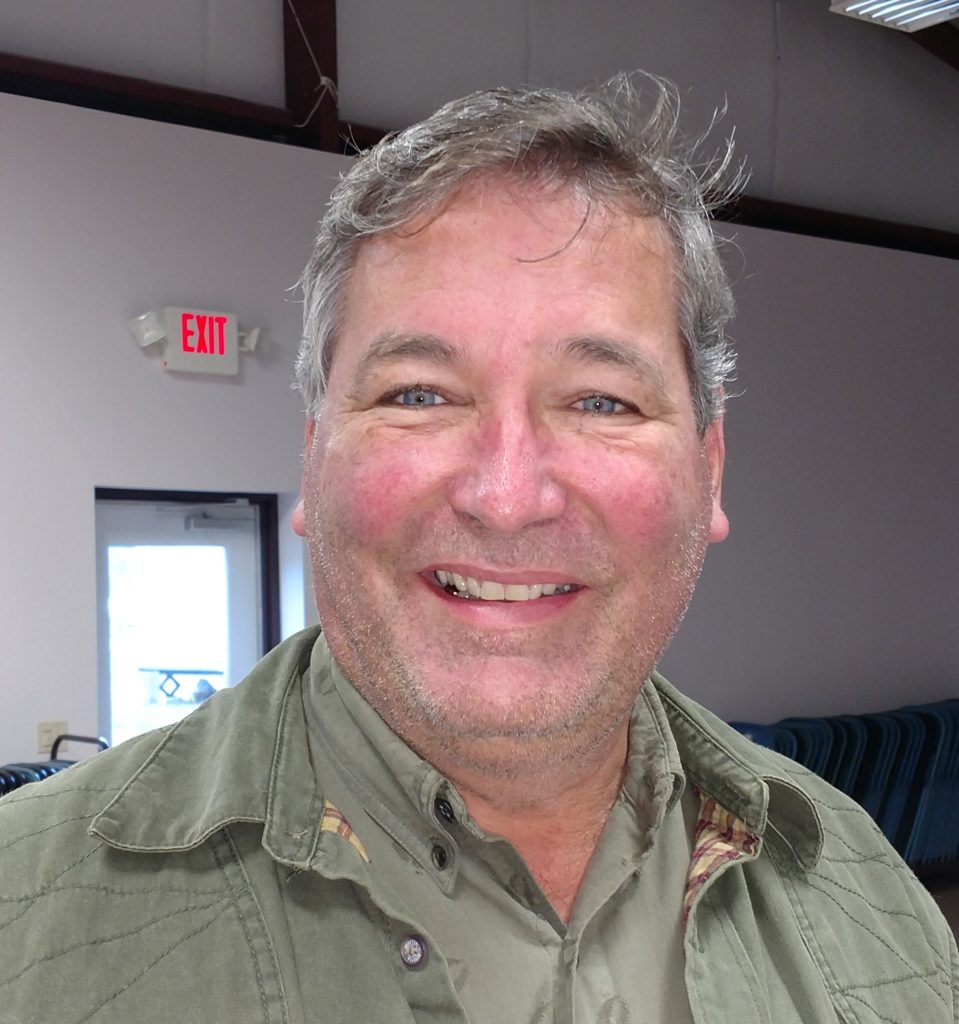
The creation of anniversary Creedmoor Match is the brain child of Rick Weber, who is a fixture in black powder shooting. He serves on the Board of the National Muzzle Loading Rifle Association and a member of the Oak Ridge Sportsmen’s Association (ORSA), where he has organized long-range muzzle loader matches for the past 25 years.
The question people ask today about the original match is “How good are we compared to those shooters back in 1874?” Rick says, “Now we’ll have a chance to find out.” The match is tentatively planned for some time in October, 2024.
At the moment Rick is still mulling over the details in terms of targets, equipment, relay time length, etc. but this is his thinking to this point.
The planned week-long match might be shot in two segments. The first “Creedmoor Open” match would be at the beginning of the week and be like any other, using muzzle loaders and any type of cartridge gun currently used in regular competitions using rules appropriate to the type of gun. People will be able to use cross sticks or wrist rests as well as ground placed spotting scopes. “We’ll have practice shots and sighters the day before the anniversary Creedmoor Match segment. Wednesday, for example would be the practice day.” says Weber.
Only the types of guns used in the original Creedmoor will be used in our anniversary Creedmoor…side-lock muzzle loaders and 1874 Sharps and Remington Rolling Block rifles (no under hammers for example). The anniversary Creedmoor will be under rules that closely approximate the original Creedmoor. That is, no practice shots, no sighters, no coaching, perhaps no ground based scopes (Rick is still mulling much of this over). And, body support only! No cross sticks or wrist rests. The rules for the original match stated, “Any position can be assumed, but no artificial rest is permitted either for the rifle or person of the shooter.” Several of the newspaper illustrations of the time showed shooters in the recumbent position. Seldom seen today, it is the most stable of all positions. Below, Kiwi Laurie Kerr used it to great effect at the 2019 Long-Range World Competition in Australia. Note the strap running from Kerr’s wrist to the back of his head. It is allowable under current rules, but not those of in the original match.
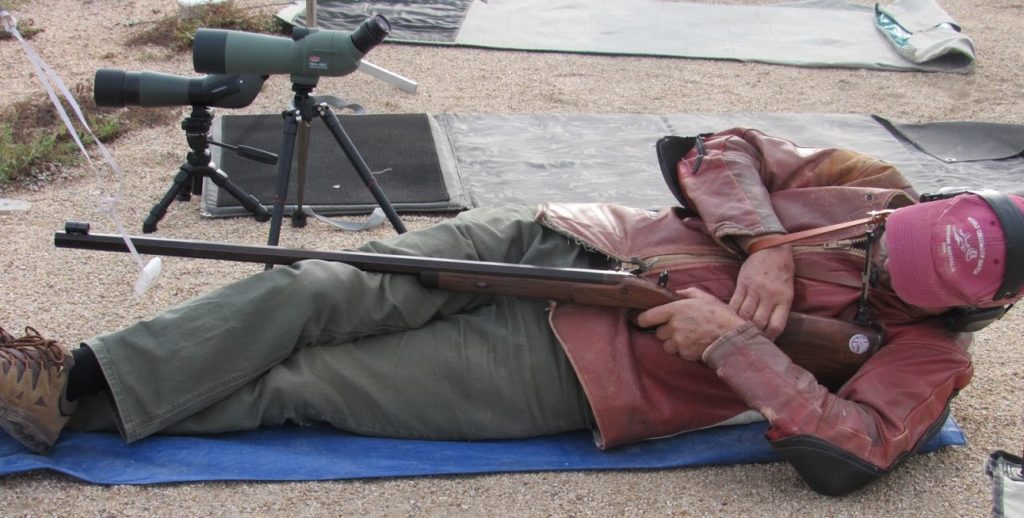
Cartridge shooters will fire15 shots in 30 minutes, muzzle loaders 15 shots in one hour. Distances will be 800, 900 and 1,000 yards. “No spotters or coaching,” Rick says adding, “It makes a real difference when the spotter says, ½ minute left or right. This is all on the shooter.”
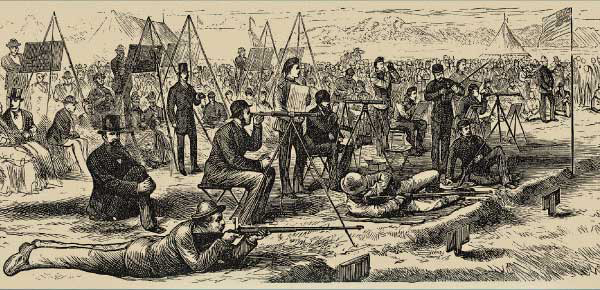
Weber has been in conversations with David Minshall of the Muzzle Loaders Association of Great Britain and notes interest of some of their shooters in crossing the pond to participate. (Wouldn’t that be a hoot!)
Origins of the Creedmoor Match: A Challenge from Ireland
What sparked the match was a letter sent to the New York Herald and published on November 22, 1873 entitled “Challenge to the Riflemen of America from the Riflemen of Ireland.” The challenge was posted in a newspaper because the Irish did not know the American NRA existed.
The American NRA, which was founded the year before, was reluctant to accept the challenge because of the lack of experienced, world-class long-range shooters. So, the Amateur Rifle Club (ARC) of New York City took up the challenge. The ARC was organized in 1872 by Colonel George W. Wingate who had been appointed on the staff of the Brooklyn Division of New York State Militia. However, as opposed to military training, the purpose of the ARC was to promote long-range rifle practice without regard to military organization and with other than military rifles. In essence, the ARC was a sporting club, with the challenge of long-range shooting as an amusement. This appealed to many and in a short time the club grew greatly by attracting shooters with no interest in soldering or being in a regiment. Nevertheless, as it was, the first contest of the ARC for their gold badge was held in July, 1873, and then at only five-hundred yards! The Irish-American match was scheduled for September 26, 1874. The Americans had to hustle to develop expertise at long-range as they were at a serious experience disadvantage relative to the Irish.
Each team had six members. One of the conditions of the match was that each team had to use guns made in their respective countries. The U.S. shooters used cartridge guns such as the Sharps Model 1874 #3 rifle and the Remington Rolling Block; the Irish used Rigby muzzle loaders (Ireland was then a British colony). The distances were 800 hundred and 900 hundred yards to be shot in the morning and 1,000 yards after lunch.
The targets were different than those used today. They were twelve feet wide and six feet high and divided into three sections. The center section was a six-foot white square. At the very center of that section was a three-foot black square. The black square was the bullseye and hits on it had a value of four points. The white areas of the center section had a value of three points. To the left and right of the center section were side sections each three feet wide and six feet high. Hits on the side sections were worth two points. The same size targets were used for each of the three distances.
For those readers of this article who have no long-range experience, a three-foot square bullseye might sound very big. At 1,000 yards it looks much like a three-hundredths of an inch dot on a piece of paper held just 3 feet from your eye. That’s about the size of a period at the end of a sentence.
As noted above, there were NO sighters and body support only. None of the illustrations of the match printed in newspapers at the time showed the use of slings.
The Match; A Close–Run Thing
The 800 yard match went to the American Team 326 to the Irish 317. In that match Irish team members had a mere two misses. The Americans, none.
The 900 yard match was different. And it was in that match that a critical mistake that might well have cost the Irish the entire match. J. K. Milner, one of the better Irish shots, scored a four-point bullseye, but, on the wrong target and it was scored as a miss. (As we all know, there are two kinds of shooters; those who have cross-fired and those who are going to, and going to again.) In the end the Irish team scored 312, the Americans, 310. Still, the aggregate total for the Americans was 636 versus the Irish 629. A good lead and the Yanks were confident.
It was at the 1,000 yard line where it could have gone either way. One American team member General T. S. Dakin turned in a 41 of a possible 60 points, a poor performance. He had three misses out of his fifteen shots and it almost cost the U.S. team the match. However, Dakin’s poor performance was partially offset by a score of 57 by H. Fulton. As it was, the 1,000 yard match was won by the Irish with a score of 302 to the American’s 298.
However, the aggregate score with one shot remaining for the Americans, was 931 for the Irish and 930 for the Americans.
For the last shot of the match, John Bodine, a 44 year-old former Colonel in the New York Militia, thenceforth named “Old Reliable”, went into his prone position, took aim, and “sent it” scoring a 4-point bullseye giving the American team the aggregate score of 934 and victory.
Further Reading
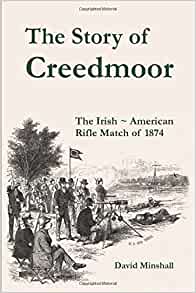
Most of the information in this article came from The Story of Creedmoor, The Irish American Match of 1874 edited and annotated by David Minshall.The central story of Creedmoor is told via an extensively annotated article from 1876, the writer’s enthusiasm giving a feel for the times and in the lead up to the Centennial Match at Creedmoor that year. Minshall provides background information on events that led to the Irish challenge and the 1874 rifle match and concludes the story with details of the follow-up match at Dollymount, Ireland, in 1875. It is available from Amazon, and a great read.
Another book of interest is the Research Press Digest 2021, Firearms, Long Range Target Shooting & Military History. Available on Amazon, and full of articles of interest to the black powder shooter, the book provides a wealth of information on subjects varied as:
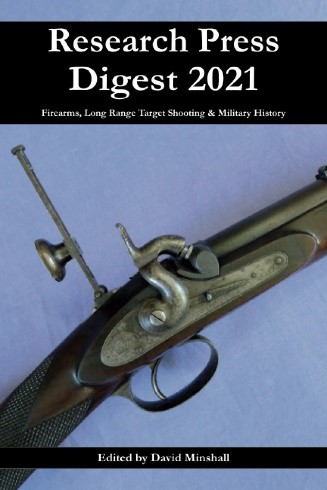
- Match and military rifles.
- The rise and demise of the match rifle.
- The challenges of hand loading ammunition.
- A history of progress of military firearms to 1866.
- An introduction to the Whitworth rifle and a history of the Rifle Musket, Pattern 1853.
- The British Military School of Musketry at Hythe.
- The Royal Small Arms Factory, Enfield
- The Small Arms of European Armies’ (1889) gives coverage of the subject from an American viewpoint, being written by a US Inspector of Ordnance, and more.
Many of the reprints are supplemented with annotation providing historical context to the original articles, plus images from the editor’s collection. Again, a great read.
Curt Brandt, An interview with the newest USIMLT Board Member
June 2021
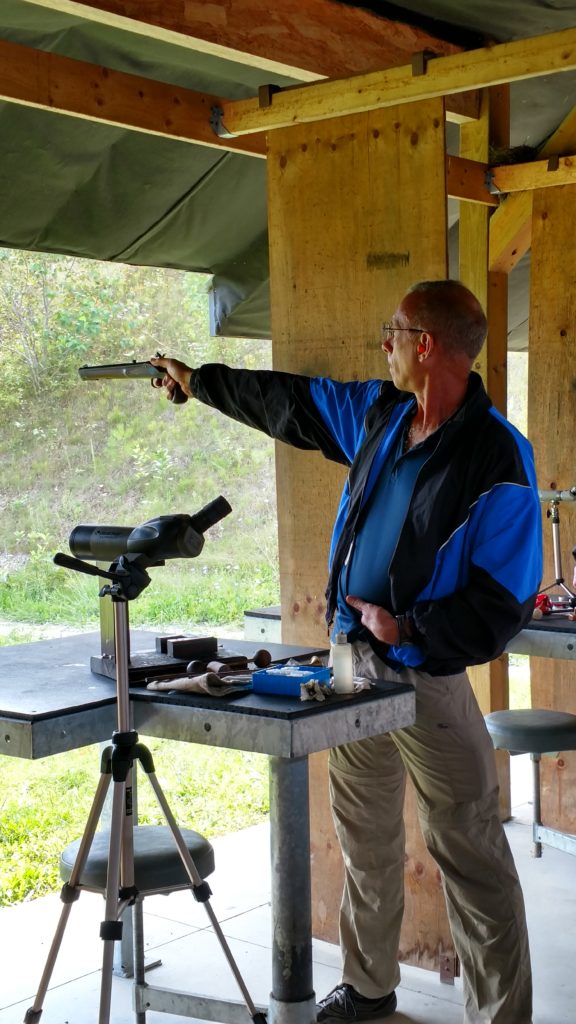
Curt’s appointment to the Board of the USIMLT was occasioned by the vacancy created by the passing of long-time member Allen Godshalk. While Curt is a relatively new member of the short-range team his qualifications, experience, judgement and manner immediately brought him to the attention of fellow board members as a candidate for future Board membership. John Ciccone recently interviewed him for this introductory article.
JC: As a new Board member, what are your ideas for the team?
CB: Coming in as new and an outsider, I have general, broad goals. I want to use my strengths, abilities and talents to assist the Board in developing the most competitive team across all disciplines to include long-range, short-range and juniors as well.
JC: Tell me about your background, I understand you went to the West Point Military Academy?
CB: I’ve always known what I wanted to do. I always wanted to be in the military. My grandfather, father, and some of my uncles served in the military and that had a big influence on me. I went to West Point, and spent 30 years in the Army. The first eight years were in the infantry including pathfinder, ranger and light infantry units.
The last 22 years I was a Special Forces officer. My operational assignments were in the 7th Special Forces Group (SFG) and the 5th SFG. Most of my time in 7th SFG was spent on counter-drug missions in South and Central America and in 5th SFG the missions I participated in were training and exercises with the friendly nations around Iraq during the post-DESERT STORM and pre-IRAQI FREEDOM era.
As a senior Lieutenant Colonel and Colonel, I finished my career with four staff tours working in either operations or requirements and resources. Two of the tours were with SOCOM [Special Operations Command is the unified combatant command charged with overseeing the various special operations component commands of the Army, Marine Corps, Navy, and Air Force of the United States Armed Forces], one with SOCCENT [Special Operations Command – Central, the sub-unified command responsible for special operations in Southwest Asia] and a one-year tour with MNF-I [Multi-National Force Iraq, the Combined Joint Headquarters responsible for coalition operations during IRAQI FREEDOM].
After retirement I spent several years as a defense contractor managing staff augmentation contracts for SOCOM. As of 2017, I am completely retired.
JC: I imagine you had a good deal of training in terms of your own marksmanship as well as training others.
CB: Yes, as a Special Forces soldiers we would go to other countries and train their military forces in basic marksmanship and then do some advanced training on our own, close quarters combat, things like that.
JC: It strikes me, that with that kind of background, you would have gone into F Class competition or something using a modern gun. What is it that got you into black powder of all things?
CB: I occasionally shoot NRA precision pistol, IDPA, USPCA and Glock matches. But, when I retired from the Army, I had some free time to pursue neglected interests. One of those is firearms and the other is American History, specifically the Colonial and Revolutionary War periods. I found a black powder shooting club near where I live. I showed-up at one of their matches and a fellow was gracious enough to let me shoot a flintlock rifle. I was hooked! From there I just started expanding my participation with club matches, state championships, NMLRA territorials, then the U.S. International Muzzle Loading Team, and the guys on the Team roped me into N-SSA.
JC: What disciplines do you shoot, particularly with the USIMLT?
CB: That’s also been expanding. I think with the last Zone Championships I shot ten events and that was everything except flintlock smooth bore musket and the matchlock events. I’ve since bought a Brown Bess, so that will be 11 disciplines, everything except matchlock.
JC: What’s your training routine?
CB: Especially before a big match, I’ll train 2 to 4 times per week, with as many as 80 shots in a session, depending on what kind of discipline I’m practicing…fewer with the flintlock rifle and more with the revolver. Most of the other times, I average one training session a week 2 club matches a month. It’s also important to stay fit, so I do quite a bit of running and calisthenics to help with that.
JC: You mentioned earlier that you have an interest in the Colonial and Revolutionary periods of American history. Are there any particular people or events in particular?
CB: My favorite topics to read about are the Colonial Ranger units, the longhunters during the period between the French and Indian War and Revolution. My favorite unit in the Revolutionary War is Daniel Morgan’s Riflemen. I’m also fascinated by Daniel Boone.
JC: (Laughing) I imagine they would be! Obviously you read a lot about Morgan and Boone, do you have favorite books you can recommend?
CB: As for Daniel Boone, I suggest Daniel Boone: The Life and Legend of an American Pioneer,by John Mack Faragher. Both Boone and Simon Kenton were the perfect blend of frontier skills and character. Boone had a way of getting along with everybody, including the Indians. That’s why I respect Boone the most.
Editor’s note: Both titles are available on Amazon.
Daniel Morgan: Revolutionary Rifleman, by Don Higginbotham
Morgan is regarded as one of the great military leaders of the Revolution. He is noted for his defeat of Banastre Tarleton’s Legion (cavalry) and the destruction of prime units of Lord Cornwallis’s troops at the 1781 Battle of Cowpens in South Carolina.
Daniel Boone: The Life and Legend of an American Pioneer,by John Mack Faragher In the first and most reliable biography of Daniel Boone in more than fifty years. (This book is considered the definitive work but it isn’t the most recent.) Faragher portrays America’s famous frontier hero. Draws from popular narrative, the public record, scraps of documentation from Boone’s own hand, and reminiscence gathered by nineteenth-century antiquarians. Faragher uses the methods of new social history to create a portrait of the man and his times and Western and frontier history with the words and ideas of ordinary people. The book is regarded as the definitive on Boone’s life.
An Interview with Art Fleener, the new Long Range Team Captain
May 13, 2020
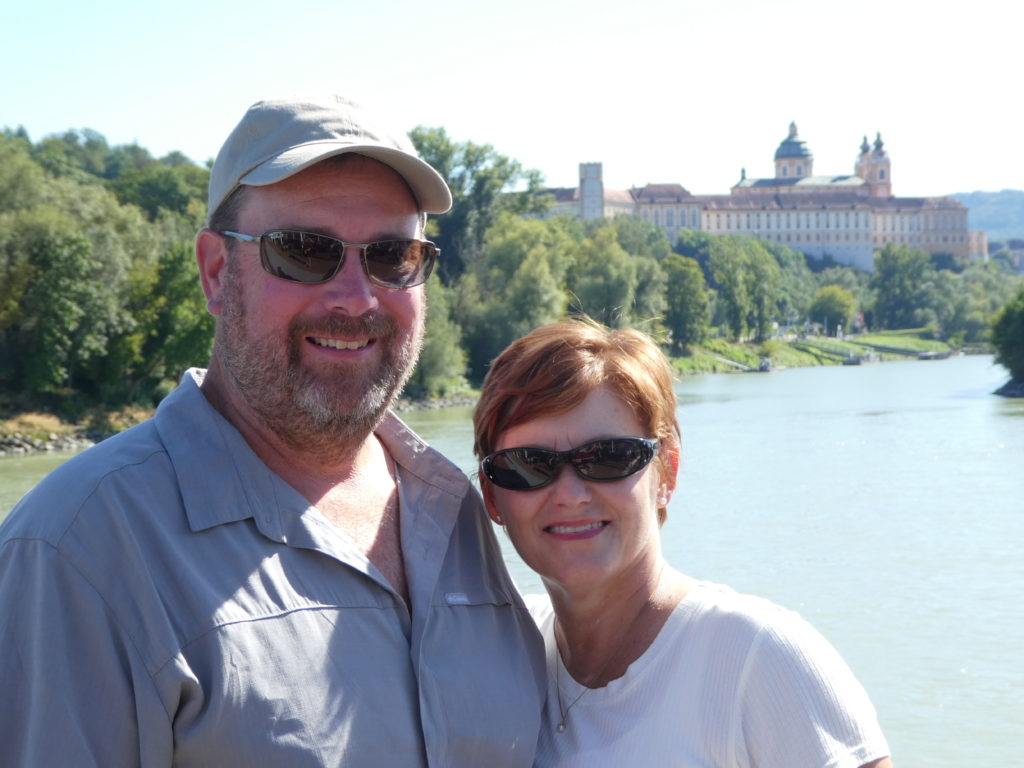
Art Fleener is the new Captain of the USIMLT Long-Range Team. His combination of accomplishments as a long-range shooter, including a World Record at 900 yards, plus his managerial experience as a board member of the largest black powder shooting organization in the U.S. uniquely qualify him to lead the team. He sat down with John Ciccone, the USIMLT Website manager and Board Member, to give us some insight into his planned effort to advance the Long-Range Team.
John: You are the new Captain of the USIMLT Long-range Team. One of the biggest concerns is how do we make the team grow?
Art: Our team did very well at Bisley, England, the site of the 2019 Long-Range World Championship. The downside is we only had 7 shooters who went there. That said, our shooters are getting older and some of them are getting to the point where traveling overseas is more and more problematic for them…and we need to make sure that there are not even fewer going to the next World’s match.
We are not growing like we should. There needs to be some new blood on the team. So, one of the things I am doing is reaching out, personally talking to long-range shooters who have not shot with us especially younger ones and try to bring them into the fold. Our seasoned shooters can be great mentors for our new folks.
John: So, where do the long-range shooters come from? I know we have made appeals to cartridge shooters, but is there a pool of long-range muzzle loading people whom we can attract?
Art: Black powder shooting is a niche. Long-range muzzle-loading shooters are an even a smaller niche. And there are reasons for that, naturally…travel, time, expense, etc. However, Rick Weber runs the largest match for long-range, muzzle-loaders in the United States, [Held annually in March at the Oak Ridge Sportsmen’s Association near Oak Ridge, TN.] He has given me the list of attendees at the event and occasionally there are new shooters among the competitors and they represent a reservoir that can be explored for the US team.
John: What kind of a road map do we have to find potential muzzle-loading competitors?
Art: One of the things I want to do this summer, assuming Covid-19 is no longer an issue, is to hold a shooters’ clinic. I want to have sections to work on mental management, reading the wind, mirage, shooting position, load development, etc. For example, a shooter might say “I want to have some help on reading mirage,” so we’d put him together with someone who is strong on that. Then we’ll shoot with him to see what his group is like.
So, in the clinic we can begin with classroom time and then get on the range to see if we’ve made improvements. The problem we have in the United States is that we are such a very large country and getting everyone together is a problem.
John: You need to get a range and a classroom to do this…where?
Art: I was planning on having a clinic at Friendship [Friendship, Indiana, the location of the National Muzzle Loading Association headquarters]. Friendship is fairly centrally located for most shooters, we have the facilities…an air conditioned classroom and a 500 yard range, and as a Board Member there, and as an officer, it’s pretty easy for me to take a look at a calendar, choose a week, and schedule it. We may not have a thousand yards, but we can work hard at 500 yards and on where your weaknesses are.
John: I’ve been to Friendship, and in nearby Lawrence there are a number of affordable hotels.
Art: We also have access to some cabins, each of which can sleep several people. My goal would be to house people on site, have a cook-out at night and provide an opportunity for people to develop friendships and comradery as a team. And, this would be open to people who have not made a firm decision to shoot for the team. The idea is that we can get them there, work with them and pique their interest in shooting and joining with us.
John: That sort of a clinic would be of a great benefit to members of the short-range team who shoot prone.
Art: Yes, and they would be welcome. Another aspect of the clinic is that we can have a 45-minute overview program of what the short-range team does, including pistol, long guns and shotgun. The idea is that we can provide a platform for recruitment for all of the disciplines in which we’re involved.
John: One aspect of participation in the Long-Range National match is the question; “Where will it be held?”
Art: Yes, and that has a big effect on turnout. At this point I am thinking of having a match mid-country. That would make it possible for more, and different shooters…those with an interest as well as regular team members will be able to make it.
John: When did you first starting shooting a long-range muzzle loader; what got you into that?
Art: At first I was mainly interested in short-range, but I was also developing an interest in long-range. While I’d never met Tom Henley in person, I did meet him over the Internet. He challenged me, he pushed me. He put some questions in front of me and said “What are you going to do with this? As things developed my interest in long-range peaked…it intrigued me. It was 2009, my first International long-range match. I’d never shot at 1000 yards. In fact I’d never shot past 500 yards in my life. My goal was to get a medal. I ended up getting a medal because I was part of the U.S. team and we placed third at long range. In 2015 at Camp Butner, I set a new World Record at 900 yards with an original rifle beating the World Record for an original rifle and my score also was higher than the replica World Record as well.